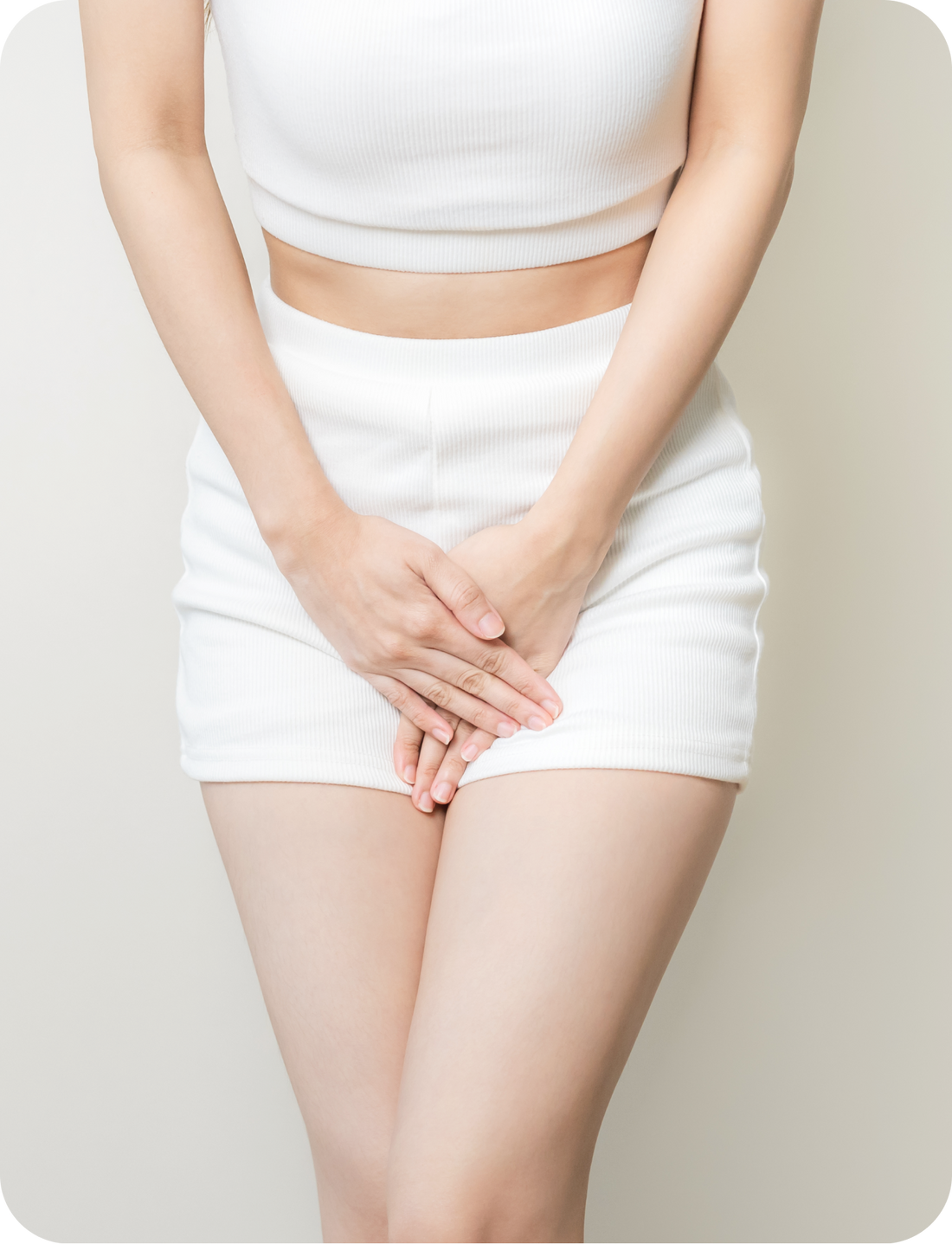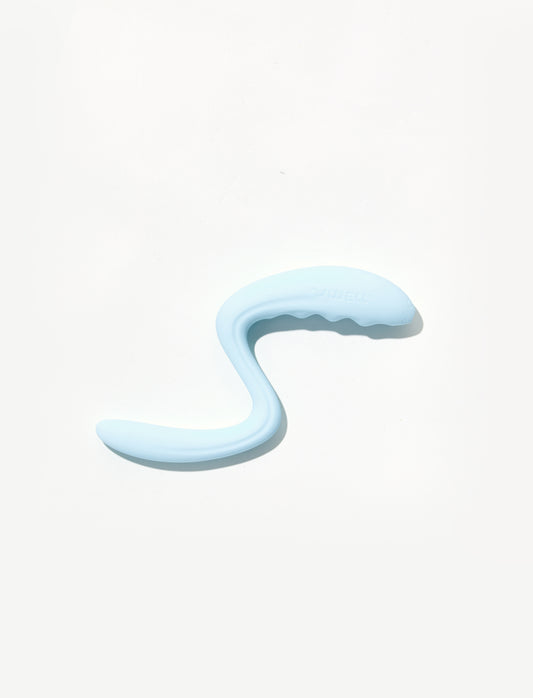Urinary incontinence is a medical condition that leads to the involuntary leakage of urine due to loss of bladder control. Its symptoms range from occasional leaks while coughing or sneezing to a sudden and intense urge to urinate, making it difficult to reach a restroom in time.
Urinary incontinence is a common issue that affects many people and can lead to quite embarrassing situations. In this article, we explain the different types of urinary incontinence and their treatments. You will be surprised to learn that simple lifestyle changes and pelvic floor exercises can effectively treat this condition.
Table of Contents
-
Types of Urinary Incontinence and Their Symptoms
-
Causes of Urinary Incontinence
-
Urinary Incontinence Diagnosis
-
Treatment Options for Urinary Incontinence
-
Conclusion
Types of Urinary Incontinence and Their Symptoms
Urinary incontinence reveals itself in various ways, causing discomfort and distress for those experiencing it. The most common types of urinary incontinence include:
Stress Incontinence
Stress incontinence occurs when you exert pressure on your bladder while coughing, sneezing, laughing, exercising, or lifting heavy objects. It's most commonly seen in women. Causes include weakened pelvic floor muscles due to pregnancy, childbirth, aging, and hormonal changes. Other factors include obesity, chronic coughing, high-impact activities, pelvic surgery or trauma, certain medications, and neurological disorders affecting bladder control.
Urge Incontinence
Urge incontinence manifests itself with a sudden, intense urge to urinate, which leads to involuntary leakage. An urgent and frequent need to urinate can result from overactive detrusor muscles in the bladder walls, which contract too often, causing urgency. Possible causes include excessive alcohol or caffeine consumption, insufficient fluid intake, constipation, lower urinary tract conditions, neurological issues, and certain medications.
Overflow Incontinence
Characterized by constant dribbling of urine, overflow incontinence is often caused by a blockage or obstruction in the bladder, which doesn’t allow the latter to fully empty. Factors like bladder outlet obstruction (enlarged prostate, strictures), weak bladder muscles, nerve damage, certain medications, constipation, infections, and structural abnormalities contribute to this condition. Treatment involves addressing the underlying causes and can include medications, catheterization, physical therapy, or surgery, depending on the situation.
Functional Incontinence
Functional incontinence is caused by a physical or mental impairment that makes it difficult to reach the bathroom, with factors that include mobility impairments (arthritis, physical disabilities), cognitive issues (dementia), communication challenges, vision impairments, environmental barriers, chronic illnesses, and aging. Management involves modifying the environment, getting assistance, and addressing underlying health conditions.
Mixed Incontinence
Mixed incontinence occurs when you experience more than one type of urinary incontinence, commonly a combination of stress and urge incontinence. It results from factors like weakened pelvic floor muscles, bladder muscle overactivity, hormonal changes, obesity, chronic coughing, neurological disorders, certain medications, and urinary tract infections. Management involves a comprehensive approach, including pelvic floor exercises, lifestyle modifications, medications, and, in some cases, surgery.
Causes of Urinary Incontinence
Urinary incontinence is usually linked to daily habits, underlying medical conditions, or physical issues. A thorough evaluation by a healthcare professional, such as a geriatrician or urologist, can help in determining the root cause of your incontinence. Generally, causes differ whether you’re experiencing temporary or persistent incontinence.
Temporary Urinary Incontinence
Temporary forms of incontinence can be linked to foods or medications that stimulate the bladder and increase urine volume. Some examples are:
- Alcohol
- Caffeine
- Carbonated drinks and sparkling water
- Artificial sweeteners
- Chocolate
- Chili peppers
- Foods that are high in spice, sugar, or acid, especially citrus fruits
- Medications such as diuretics, heart and blood pressure drugs, sedatives, muscle relaxants, and large doses of vitamin C can contribute to increased urine production.
Various easily treatable medical conditions can also cause temporary urinary incontinence:
- Urinary tract infections can irritate the bladder, leading to strong urges to urinate.
- Constipation can cause incontinence because the rectum is located near the bladder and shares many of the same nerves. When stool is hard and compacted, it can overstimulate these nerves and increase the need to urinate.
Persistent Urinary Incontinence
Urinary incontinence can persist due to underlying physical problems or changes, including:
- Weak Pelvic Floor Muscles — Weakening of the pelvic floor muscles, often due to pregnancy, childbirth, or aging, can lead to stress incontinence.
- Nerve Damage — Diabetes, multiple sclerosis, or injuries affecting the nerves controlling the bladder can result in urge incontinence.
- Hormonal Changes — Women may experience incontinence due to hormonal fluctuations, especially during menopause.
- Obstruction — Any obstruction in the urinary tract, such as a bladder stone or tumor, can disrupt normal bladder function.
- Neurological Disorders — Conditions affecting the brain and spinal cord, including Parkinson's disease, multiple sclerosis, a stroke, or a brain tumor can lead to a neurogenic bladder.
Urinary Incontinence Diagnosis
In addition to your symptoms, a doctor will consider your medical history and conduct a physical examination to determine the type of urinary incontinence you are experiencing. Afterward, they are likely to recommend the following:
- Urinalysis: A medical test that involves analyzing a urine sample to check for any signs of infection, blood, or other abnormalities that may indicate an underlying health condition.
- Bladder Diary: Keeping a bladder diary, where you record fluid intake, bathroom visits, and instances of incontinence over a few days provides valuable information for diagnosis.
- Post-Void Residual Measurement: Your doctor may conduct a postvoid residual measurement to check the amount of urine left in your bladder after you urinate into a container that measures urine output. This test is usually done using a catheter or ultrasound. If a large amount of urine remains in your bladder, it could indicate an obstruction in your urinary tract or a problem with your bladder nerves or muscles.
If your doctor requires more information, they may recommend additional tests, such as urodynamic testing and pelvic ultrasound. These tests are usually for people who are considering surgery.
Treatment Options for Urinary Incontinence
Treatment for urinary incontinence differs based on the type and severity of symptoms. In some cases, a combination of treatments may be necessary. If an underlying condition is causing your symptoms, you will receive treatment to address that condition first. Your doctor may recommend less invasive treatments initially — if these methods do not provide relief, they may suggest alternative options.
Various treatment options are available for urinary incontinence, ranging from lifestyle changes to medical interventions. Here are some common approaches:
- Pelvic Floor Exercises: Pelvic floor exercises can strengthen the muscles around the bladder and help with urinary incontinence. A pelvic wand massager can help position and relax the muscles, making the exercises more effective.
- Bladder Training: The goal is to train the bladder to hold urine longer by gradually increasing the time between bathroom visits. To achieve this, you can hold off on urinating for 10 minutes every time you feel the urge until you can go for 2.5 to 3.5 hours without using the bathroom.
- Double Voiding: A technique that helps you empty the bladder more completely to avoid overflow incontinence. It involves urinating, waiting for a few minutes, and then urinating again.
- Lifestyle Modifications: Making simple changes to maintain a healthy weight, avoid bladder irritants like caffeine and alcohol, and stay hydrated can alleviate incontinence symptoms.
- Medications: Common medications for incontinence, including anticholinergics and mirabegron, can calm an overactive bladder and relax bladder muscles, aiding in the management of urge incontinence.
- Biofeedback: This technique uses visual or auditory cues to help individuals gain awareness and control over pelvic floor muscles.
- Pessaries: These devices are inserted into the vagina to support the bladder and reduce stress incontinence.
- Incontinence Products: Pads or adult diapers can provide temporary relief and improve quality of life.
- Minimally Invasive Surgeries: Bulking agent injections can be used to treat stress incontinence. However, this procedure is not as effective as surgery and may need to be repeated.
- Neuromodulation: Nerve stimulators that use electrical pulses to control overactive bladders can be tried if other treatments don't work.
- Surgery: For more severe cases of incontinence, sling procedures or bladder neck suspension may be considered.
Conclusion
Although urinary incontinence is a common issue among women and is often mistakenly believed to be a natural part of aging, it is important to seek medical help for bladder control issues.
If you need additional support to manage bladder leakage, consider using the pelvic wand in conjunction with pelvic floor exercises to strengthen your pelvic floor muscles.
FAQs
1. Is urinary incontinence only associated with aging?
No, urinary incontinence is not exclusively associated with aging. Although it occurs more frequently in older individuals, it can affect people of all ages.
2. Can I manage urinary incontinence without medical intervention?
In some cases, lifestyle changes, pelvic floor exercises, and behavioral strategies may help you effectively manage mild urinary incontinence. However, consulting with a healthcare professional is recommended for proper guidance.
3. Can men experience urinary incontinence?
Yes. Men can experience urinary incontinence due to an enlarged prostate or as a result of prostate surgery and nerve damage.
4. Is urinary incontinence a temporary or chronic condition?
Urinary incontinence can be temporary or chronic, depending on its underlying cause. Some cases can be resolved with treatment, while others may require ongoing management.




